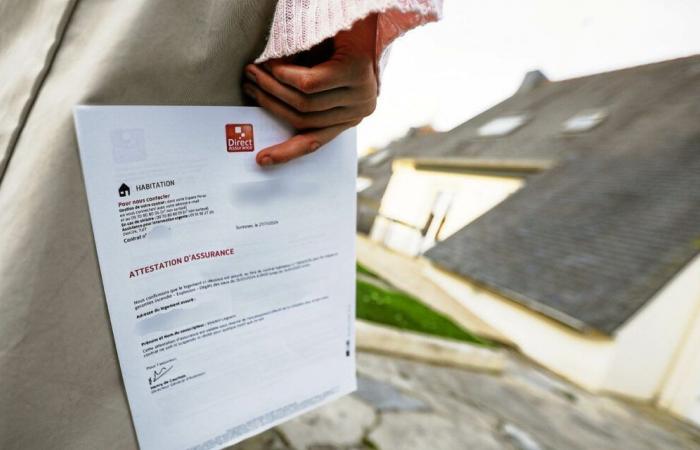
This is an alarming national record for Côtes-d’Armor. According to a projection published in May by the Prudential Control and Resolution Authority (ACPR), the body supervising the banking and insurance sectors, it is in this Breton department that the inevitable increase in insurance premiums could trigger the largest wave of cancellations in the country in 2050: a little more than seven out of 100 home contracts, or nearly 26,000, according to a figure provided by the ACPR at Telegram, could be affected. Ille-et-Vilaine is also in the Top 3 nationally (with Bouches-du-Rhône), with almost or more than 20,000 estimated terminations (between 3% and 5% of contracts). The other Breton departments would be less affected, with 1,000 to 5,000 contracts affected in each department.
Coastlines: a bill multiplied by three
These terminations would be the work of policyholders who consider the increases too significant. The report does not, however, provide any figures for terminations carried out by insurers who consider the risks too high. “In all cases, our scenarios do not reveal policyholders who would find themselves without insurance,” insists the supervisory authority.
In France, the average increase in home insurance premiums could rise to 158% by 2050. But in Brittany, as in a large part of the coastal areas, it could reach 200%, a threefold increase.
Côtes d’Armor overexposed?
“It would seem that northern Brittany as well as the Mediterranean coasts (Editor's note: like a good part of the French coast) are the territories where the termination thresholds would be the highest, and also those for which the increase in premiums would be the greatest” , confirms the study, which mentions “a result that could possibly be explained by a higher excess loss ratio for these geographical areas”.
It is also in the Côtes d'Armor, again, that the “CAT NAT” premium (guarantees covered by the natural disaster regime), representing 12% of the total premium on housing (20% from January 1, 2025), could experience the largest increase in France: more than 350%, or a multiplication by more than 4.5!
Would Côtes-d'Armor be the French department most exposed to a risk of worsening natural disasters (submersion, flooding as far as it is concerned, according to the report) at this time? “Surprising”, judge two global warming experts interviewed by Le Télégramme.
Record increase, but lower than average cost
Requested by us, the ACPR puts things into perspective, indicating that the maps presented in this study are “to be interpreted with caution”, and “should not be understood as a prediction or an atlas of the departments which would be most affected by the change climate, by 2050”.
And if the increase is among the highest expected in Brittany and France, and the termination rate among the highest in the country, it is because this “CAT NAT” bonus is “particularly cheap today” there. , notes the ACPR. Almost three times lower than the national average! Currently count “€13 in Côtes-d’Armor per household per year, compared to €34.10 nationally”. Brittany should still be cheap in 2050 but less than before. And it is the very significant increase in the insurance premium (a good part of which is linked to inflation alone over the period 2022-2050), and its psychological effect, which would cause, for some policyholders, the desire to cancel: to find a cheaper competitor.
Warming: the limit of 1.5°C crossed… this year
The climate scenario chosen for this home insurance simulation is not the darker one that reality seems to follow. Another limitation of the report from the Prudential Control and Resolution Authority (ACPR), the body supervising the banking and insurance sectors: the intermediate climate scenario used to simulate changes in the amounts of home insurance premiums and churn rates in 2050, may well prove to be a little too optimistic. This forecasts an increase contained between 1.4°C and 2°C in 2050, while this limit is crossed for the first time… this year, with a probable + 1.55°C. This threshold not to be exceeded was also that set by the Paris agreements (2015) by… 2100. It is precisely the crossing of these + 1.5°C, and its persistence in the coming years, which makes it likely a climatic boom of which we are only measuring the very first effects.
According to the latest UN calculations, the world is currently heading towards “catastrophic” global warming of 3.1°C over the century, if global greenhouse gas emissions are not quickly reversed. For the moment, not only have these not decreased, but on the contrary they have increased further (+ 2.5% in 2024). France is more exposed than the world average to climate risk. The most recent trajectory adopted by the French authorities shows a warming of… 4°C in 2100. Before this date, whatever the climatic scenarios, intermediate or pessimistic, the effects should remain approximately the same. On the other hand, the most significant effects are expected after 2050.
France





